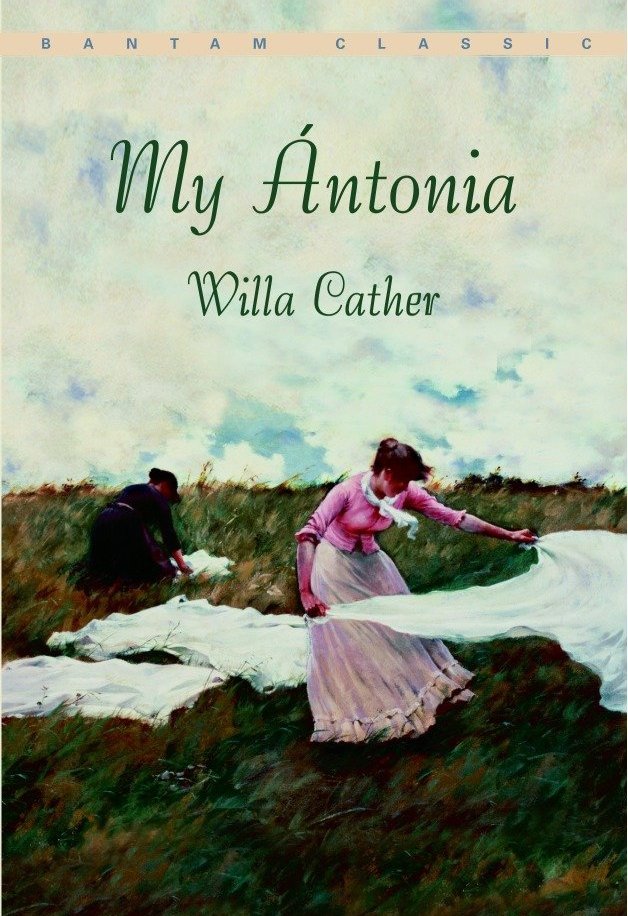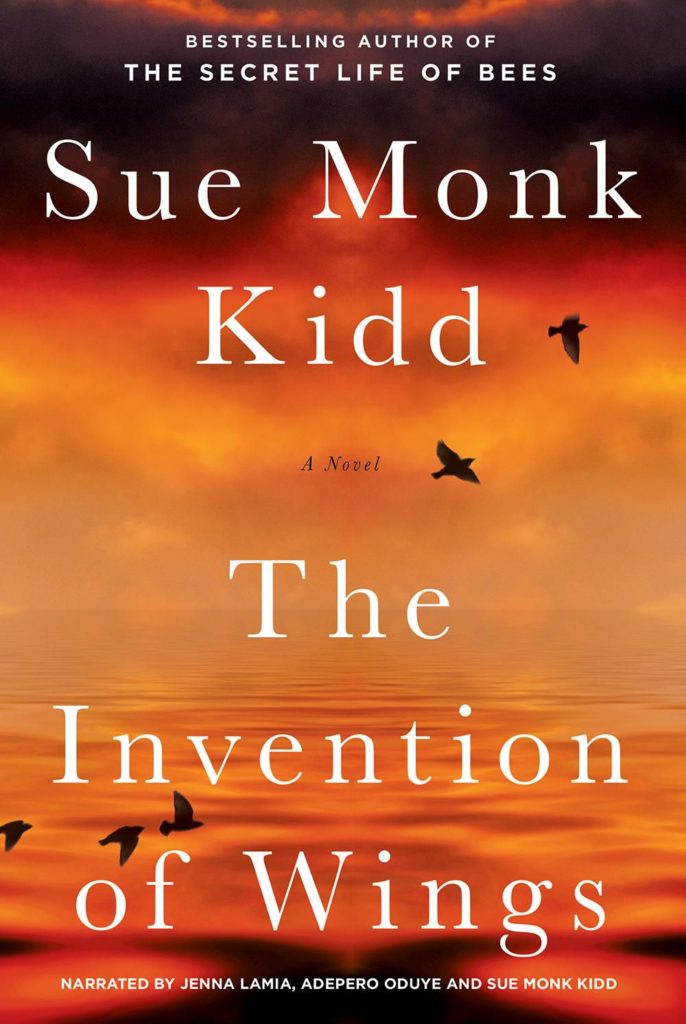My Ántonia by Willa Cather, and The Invention of Wings by Sue Monk Kidd
Friendship and imminent threat are two themes that are emerging concurrently in my reading of Willa Cathers’ My Ántonia and Sue Monk Kidd’s The Invention of Wings. In My Ántonia we have the friendship between Jim, the narrator, and his eponymous European friend, and in The Invention of Wings we follow the relationship between Hetty (Handful) and Sarah, alternating narrators. Both friendships are formed against the backdrop of imminent threat – environmental, cultural, physical, etc. As such, authenticity of setting is a major goal for both writers as it comes to provide much of the conflict that drives the plot. For example, the American West provides harsh weather, strange characters, and the unknown wilderness. The American South presents its own dangers with slavery, white supremacy, jealousy, and abuse. As such, the major characters experience shared hardship that increases their intimacy/friendships.
In both books, the two sets of protagonists are regularly challenged to form friendships due to their class and race differences. Though both stories present a major character who is “othered” by their dominant cultures (Hetty is a black slave and Ántonia is a European immigrant), the primary characters, too, are wrestling with their own hegemonic cultural expectations. Sarah is fighting against Southern ideals of white supremacy as well as disappointing gender norms. Jim is a fish-out-of-water Southerner who finds himself amongst mysterious European immigrants in the American West.
An excellent example of the developing relationship among Hetty and Sarah is when Sarah decides to teach Hetty to read. This is made all the more contentious because we already know from a previous scene that African Americans were prohibited from literacy. Sarah has already been dismissed from her duties as the slave children’s Sunday school teacher because she had enthusiastically taught them the ABCs.
One morning while Charleston turned miserably on the brazier of summer, Hetty and I lay flat on our stomachs on the rug in my room while I read aloud from Don Quixote (…) Hetty dug at an inflamed mosquito bite on her forearm and frowned at the book pages as if they were some kind of irresolvable code. I wanted her to listen to the exploits of the knight and Sancho Panza, but she interrupted me repeatedly, placing her finger on some word or other, asking, “What does that one say?” and I would have to break off the story to tell her. She’d done the same thing recently as we read The Life and Strange Surprizing Adventures of Robinson Crusoe of York, and I wondered if, perhaps, she was merely bored with the antics of men, from the shipwrecked to the chivalrous. As I sent my voice into dramatic lilts and accents, trying to lure her back into the tale, the room grew dark, tinctured with an approaching storm. Wind blew through the open window, coming thick with the smell of rain and oleander, swirling the veils of the mosquito net. I stopped reading, as thunder broke and rain splatted across the sill. Hetty and I leapt up in unison and drew down the pane, and there, swooping low in the yellow gloom, was the young owl that Charlotte and Hetty had fed faithfully through the spring. It had grown out of its fledgling ways, but it had not vacated its residence in the woodpile. I watched it fly straight toward us, arcing across George Street and gliding over the work yard wall, its comical barn owl face strikingly visible. As the bird disappeared, Hetty went to light the lamp, but I was fixed there. What came to me was the day at the woodpile when Charlotte first showed me the bird, and I remembered the oath I’d made to help Hetty become free, a promise impossible to fulfill and one that continued to cause me no end of guilt, but it suddenly rang clear in me for the first time: Charlotte said I should help Hetty get free any way I could. Turning, I watched her carry the lantern to my dressing table, light swilling about her feet. When she set it down, I said, “Hetty, shall I teach you to read?” (Kindle Location 814-832)
This single passage serves numerous purposes: 1) It underscores Sarah’s commitment to helping Hetty, partly a promise she made to Hetty’s mother in an earlier scene; 2) it underscores the kind of relationship Sarah is forming with Hetty, a slave, and that power differential is important; and 3) it illustrates Sarah rebellious nature in the face of imminent threat, putting herself in danger to pursue her own beliefs of equality and to support Hetty…thereby also putting Hetty in danger as well. Monk Kidd provides numerous instances of foreshadowing earlier in the novel to hint at the fate of unruly slaves.
In My Ántonia, the narrator Jim also struggles with his friendship with Ántonia in the face of what he perceives to be the cultural norm for boys and girls like them:
Much as I liked Ántonia, I hated a superior tone that she sometimes took with me. She was four years older than I, to be sure, and had seen more of the world; but I was a boy and she was a girl, and I resented her protecting manner. Before the autumn was over she began to treat me more like an equal and to defer to me in other things than reading lessons. This change came about from an adventure we had together. (48)
The adventure he mentions is a run-in with a rattlesnake:
Ántonia came after me, crying, “O Jimmy, he not bite you? You sure? Why you not run when I say?” “What did you jabber Bohunk for? You might have told me there was a snake behind me!” I said petulantly. “I know I am just awful, Jim, I was so scared.” She took my handkerchief from my pocket and tried to wipe my face with it, but I snatched it away from her. I suppose I looked as sick as I felt. “I never know you was so brave, Jim,” she went on comfortingly. “You is just like big mans; you wait for him lift his head and then you go for him. Ain’t you feel scared a bit? Now we take that snake home and show everybody. Nobody ain’t seen in this kawn-tree so big snake like you kill.” She went on in this strain until I began to think that I had longed for this opportunity and had hailed it with joy (…) That snake hung on our corral fence for several days; some of the neighbors came to see it and agreed that it was the biggest rattler ever killed in those parts. This was enough for Ántonia. She liked me better from that time on, and she never took a supercilious air with me again. I had killed a big snake—I was now a big fellow. (51-52; 56)
It is in direct response to the threat of the wild that Jim is afforded an opportunity to grow in Ántonia’s esteem. As the novel continues, we learn how this is the first of many experiences that will have Jim firmly associating Ántonia with the West and all it represented to him.
Examining these two novels in this way allows me to consider my own protagonist and the potential usefulness of both setting as source of conflict/threat and friendship as a driving/complicating factor in the plot. I can also see how characters can be defined by their relationships and interactions with fellow characters.
Works Cited
Cather, Willa. My Ántonia. Boston: Houghton Mifflin, 1954.
Monk Kidd, Sue. The Invention of Wings. New York: Viking, 2014.


